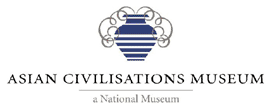
Masjid Khadijah, 2000

Masjid Kampong Holland, 1999

Masjid Hajjah Fatimah, 2000
 Masjid Khadijah, 2000 |
 Masjid Kampong Holland, 1999 |
 Masjid Hajjah Fatimah, 2000 |
The symbol of a crescent moon cradling a five-pointed star is today identified as an emblem for Islam, just as a cross popularly signifies Christianity. The moon plays a significant role in the Islamic calendar. Each new month begins with the first sighting of the hilal - the new crescent moon. The hilal therefore determines the practice of two basic pillars of Islam - the beginning and ending of Ramadan, the Muslim period of fasting, and the season for performing the Haj, the Muslim pilgrimage.
The Islamic world has used the hilal as a decorative motif as early as the 8th century, on coins, jewellery, textiles and metalwork. Minarets and domes of some mosques, and secular buildings alike, have been crowned with crescent finials.
Since the 19th century, the crescent moon and star have become an Islamic motif par excellence. The crescent moon (which grows over time into a full moon) has been likened by some to signify Islam as a 'growing' religion, and the five-pointed star as the five pillars of Islam.
In Singapore today, the crescent-star motif can also be found atop the dome or minaret of many mosques, and as a motif in the interior of the prayer halls.
Exhibition is on at the Asian Civilisations Museum till 31 December 2002. This document is part of a joint project of the Asian Civilisations Museum and the University Scholars Programme, National University of Singapore. The images and accompanying text appear here with the kind permission of the Asian Civilisations Museum.
 |
![[Spirit of a Community]](spirit2.gif)
Last updated: February 2002